Circular 681
Revised by Rossana Sallenave
College of Agricultural, Consumer, and Environmental Sciences, New Mexico State University.
Author: Extension Aquatic Ecology Specialist, Department of Extension Animal Sciences and Natural Resources, New Mexico State University. (Print Friendly PDF)
Plants are an important and natural component of any aquatic ecosystem. In addition to providing oxygen to the water, aquatic plants provide other ecological services, such as stabilizing shorelines; absorbing nutrients; improving water quality; providing food and habitat to fish, wildlife, and other aquatic species; and enhancing the natural beauty of aquatic environments. However, excessive growth of plants as a result of high nutrient levels can lead to a number of problems and will have a detrimental effect on the body of water, its users, and its inhabitants. Excessive aquatic vegetation can impede water flow, prevent recreational activities, have an unattractive appearance, reduce habitat value, increase rates of sedimentation, and can lead to fish kills following large plant die-offs.
This publication describes the different methods available to control aquatic weeds. Its contents will focus on aquatic plants (emergent, floating, and submersed vegetation) and not algae. For more information on controlling algae, refer to NMSU Extension Guide W-103, Managing Filamentous Algae in Ponds (https://pubs.nmsu.edu/_w/W103/index.html).
What Causes Excessive Growth of Aquatic Plants?
The physical and chemical conditions that create environments prone to aquatic weed infestations include bodies of clear, shallow water in which sunlight can penetrate to the bottom, coupled with high levels of plant nutrients, particularly nitrogen and phosphorus. Most aquatic weeds are exotic (non-native) species that reproduce rapidly and tend to be more competitive than their native counterparts. Once introduced, they spread easily throughout the aquatic environment via wildlife, boats, and other equipment and machinery.
How Can Aquatic Weeds Be Controlled?
To manage aquatic weeds effectively, a holistic, integrated pest management (IPM) approach should be adopted. The goal of an IPM approach is to reduce the pest impacts to an acceptable level, since a complete elimination of all weeds is usually unattainable and not necessary to achieve satisfactory results.
A weed management plan should be developed based on the following considerations:
- Identification of weed species (correct identification is essential to select the most effective management strategy).
- Assessment of economic, aesthetic, and recreational significance of the site (this will influence the extent of weed infestations that will be tolerated before actions are taken).
- Economic limitations (some treatments are more costly than others).
- Environmental considerations (e.g., are there sensitive or protected species in the area?).
All available methods should be considered, particularly focusing on those that best fit your circumstances. Be aware that multiple weed species will usually require multiple methods/products, and that repeated treatments will probably be necessary. Finally, sites should be monitored after treatment to evaluate the effectiveness of management practices. Keeping good records of methods used and conditions under which methods were applied (e.g., wind, water, weather conditions) can be very useful for making future decisions.
Aquatic Weed Identification
The first and most important step in controlling any aquatic weed infestation is the correct identification of the weed. The control method will depend on the type of weed since most herbicides are specific to particular types of aquatic plants. Once the weed is identified, an appropriate control method can be selected and utilized. Aquatic weeds fall into one of three categories: submersed plants, floating plants, and emergent plants.
Submersed or submerged plants are soft-stemmed, rooted plants with most of the vegetation below the water surface. Some portions may rise above the surface of the water. Examples of submersed plants include parrot feather (Figure 1), Eurasian watermilfoil (Figure 2), hydrilla (Figure 3), and pondweeds (Figure 4).
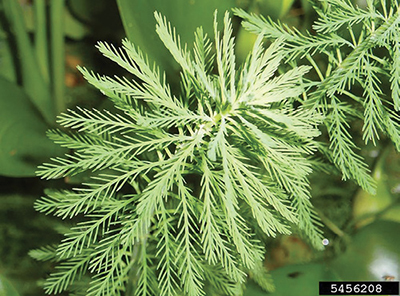
Figure 1. Parrot feather (Myriophyllum aquaticum) (photo courtesy of Leslie J. Mehrhoff, University of Connecticut, Bugwood.org).
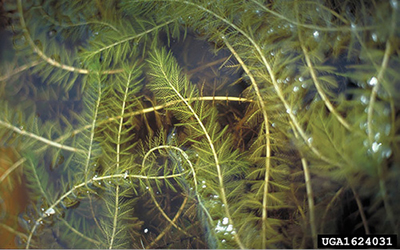
Figure 2. Eurasian watermilfoil (Myriophyllum spicatum) (photo courtesy of Alison Fox, University of Florida, Bugwood.org).
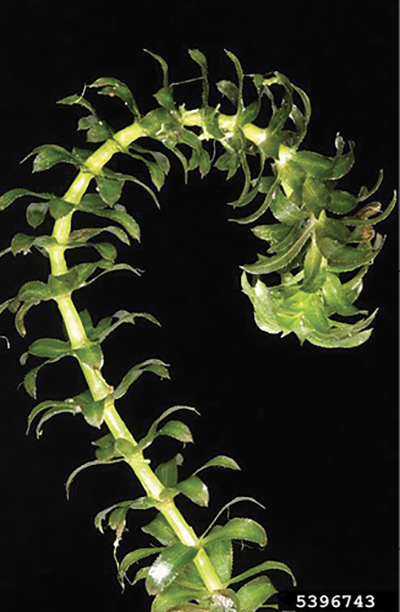
Figure 3. Hydrilla (Hydrilla verticillata) (photo courtesy of Robert Vidéki, Doronicum Kft., Bugwood.org).
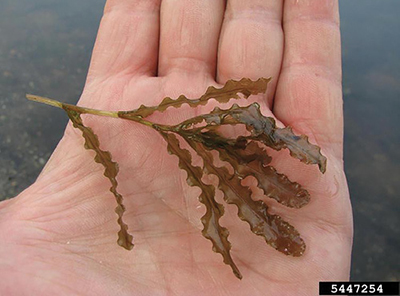
Figure 4. Curly-leaved pondweed (Potamogeton crispus) (photo courtesy of Leslie J. Mehrhoff, University of Connecticut, Bugwood.org).
Floating plants are free-floating with roots that hang in the water from the floating green portions of the plant. They come in all sizes, from tiny such as watermeal (Figure 5) and duckweed (Figure 6) to very large, which include salvinia (Figure 7) and water hyacinth (Figure 8).
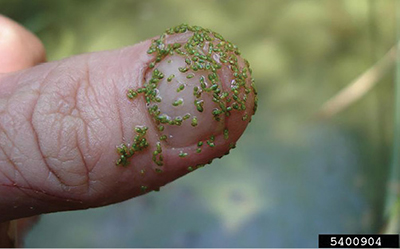
Figure 5. Watermeal (Wolffia spp.) (photo courtesy of Graves Lovell, Alabama Department of Conservation and Natural Resources, Bugwood.org).
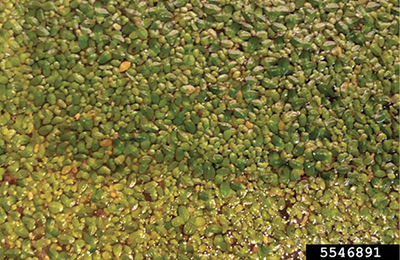
Figure 6. Common duckweed (Lemna minor) (photo courtesy of Rebekah D. Wallace, University of Georgia, Bugwood.org).
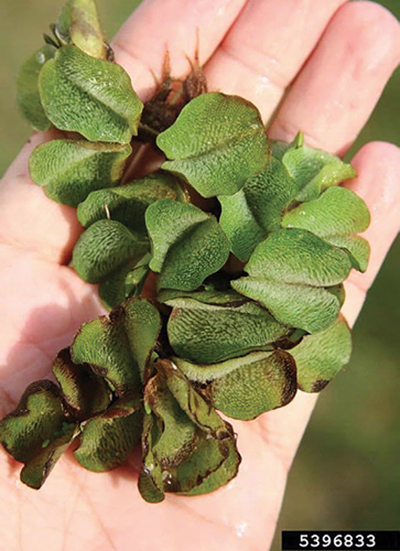
Figure 7. Giant Salvinia (Salvinia molesta) (photo courtesy of Robert Vidéki, Doronicum Kft., Bugwood.org).
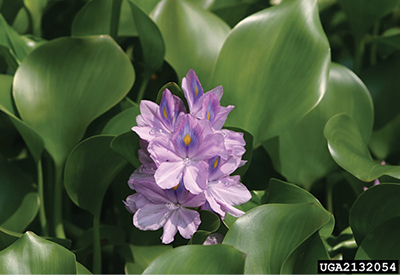
Figure 8. Water hyacinth (Eichhornia crassipes) (photo courtesy of Wilfredo Robles, Mississippi State University, Bugwood.org).
Emergent plants are rooted plants with stiff or firm stems that stand above the surface of the water. They can often be found along the shoreline and include cattail (Figure 9), common reed (Figure 10), water lilies (11), and alligator weed (Figure 12).For a more complete list of aquatic weeds found in New Mexico and the Southwest, as well as assistance with identification, you can refer to the NMSU Extension publication Troublesome Weeds of New Mexico (https://pubs.nmsu.edu/weeds/docs/troublesomeweedsnm_small.pdf) and the Texas A&M AQUAPLANT aquatic plants identification website at https://aquaplant.tamu.edu/plant-identification/.
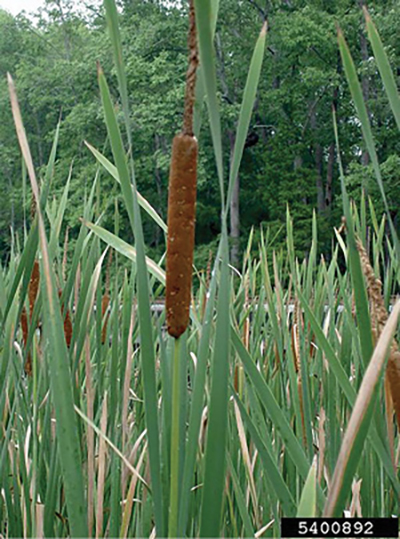
Figure 9. Cattail (Typha spp.) (photo courtesy of Graves Lovell, Alabama Department of Conservation and Natural Resources, Bugwood.org).
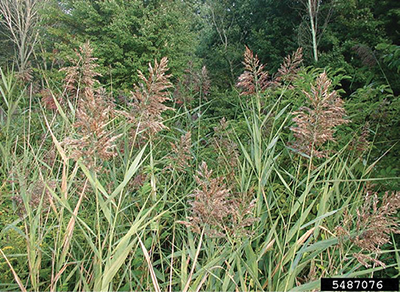
Figure 10. Common reed (Phragmites australis) (photo courtesy of Leslie J. Mehrhoff, University of Connecticut, Bugwood.org).
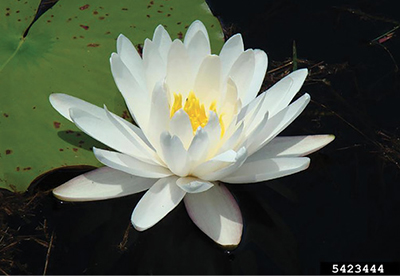
Figure 11. Fragrant water lily (Nymphaea odorata) (photo courtesy of Rebekah D. Wallace, University of Georgia, Bugwood.org).
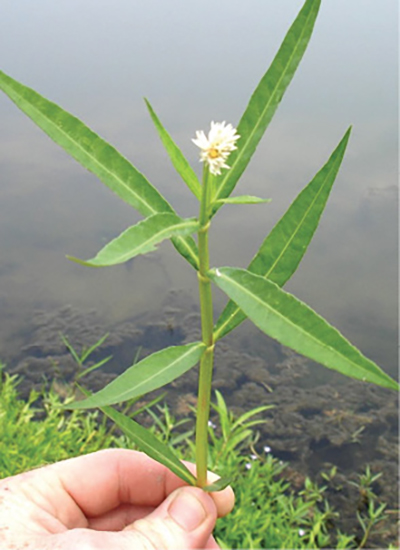
Figure 12. Alligator weed (Alternanthera philoxeroides) (photo courtesy of Graves Lovell, Alabama Department of Conservation and Natural Resources, Bugwood.org).
What Control Methods Are Available?
As previously mentioned, deciding on the best management strategy will depend on the weed to be controlled, the utility of the body of water needing weed control, the budget you have to control the weeds, and environmental and aesthetic considerations. All these factors should help you decide how to successfully manage your aquatic weed infestation in a safe and sustainable way.
Preventive Control – Nutrient and Watershed Management
Preventing weed problems from occurring in the first place is more effective and far less costly than controlling them once they develop. There are several strategies that can be used to reduce the likelihood of weed overgrowth.
- Limit and reduce the input of nutrients, particularly phosphates and nitrates coming from:
- Runoff from fertilized fields
- Wastes from pets, geese, ducks, and livestock
- Soil erosion
- Plant waste (e.g., mower clippings) - Avoid the use of fertilizers containing phosphorus (P) on waterfront properties, and don’t fertilize close to water.
- Establish and maintain a 10- to 20-foot buffer strip of undisturbed vegetation along shorelines of water bodies.
- Check for hidden sources of nutrients, such as septic fields and drainage tiles.
- Plant deciduous trees far enough away from water so leaves do not fall into water and accumulate.
- Rooted aquatic weeds usually begin growing in shallow water that is less than 2–3 feet deep. To eliminate the development of weedy plants in these shallow water areas, edges of new or existing ponds should be deepened if possible. Typically, a 3:1 slope (a 1-foot drop in depth per 3 feet of distance from the shore) is recommended.
- Line the bottom of ponds with a gas-permeable liner to prevent rooted weeds from growing.
- Avoid planting species that propagate by rhizomes (horizontal underground stems that put out lateral shoots and roots) because these are plants that will be more difficult to control by mechanical means.
- Inspect any new plant material for “hitchhikers,” unwanted attached weed species and seeds.
- Inspect any equipment for roots or other fragments of unwanted weeds.
Cultural Control
Cultural measures are strategies that can be used to alter the aquatic habitat in such a way that the weeds lose their competitive advantage. They include the following:
- Drawdown, decreasing the water level of the pond, lake, or irrigation canal to expose the shallow areas to freezing temperatures and/or drying, can be effective at controlling certain types of submersed weeds. While this method is inexpensive and effective for many weeds, it does not work on all weeds and may have negative impacts on the human use of the water body and on some aquatic animal species, such as amphibians. Additionally, algal blooms may sometimes form as a result of drawdowns.
- Shading, the application of a non-toxic, water-soluble dye (products such as Aquashade) to the water early in the growing season, can control both submersed weeds as well as algae by blocking sunlight needed for the submersed plants to grow. Dyes are inexpensive, but multiple applications may be necessary to maintain the required concentration; thus, their use is limited to water bodies with no outflow. Dyes must be applied early in the season, before weeds emerge; once the weeds reach the water surface they can photosynthesize and the dye will have no effect. Additionally, shading may suppress the natural food chain in your water body, which could negatively impact fish and other aquatic species. Dyes have no herbicidal properties; they simply color the water.
Mechanical Control
Mechanical control involves the physical removal of aquatic weeds through hand pulling, raking, or cutting/harvesting using some sort of mechanized equipment. The advantages of this method are that it immediately relieves the problem, does not involve the use of chemicals, and, in some cases, may be the only option for certain sites. The disadvantage is that it is labor-intensive and can be slow, depending on the size of the area and weed population to be controlled. Also, it provides only short-term control and will need to be repeated since the removal of all the roots and rhizomes is unlikely. Mechanical cutters are only recommended if they also harvest the cut material; if not, cut plant fragments can survive for long periods of time, can develop roots, and subsequently invade other areas. Additionally, if the cut material is not removed, there is a risk of fish kills due to suffocation caused by reductions in dissolved oxygen associated with the decomposing plant material.
Biological Control
Biological control is the introduction of a natural predator or enemy to control abundances of pest species. The triploid (sterile) grass carp has been successfully used to control certain types of aquatic weeds. These herbivorous fish will feed on submersed species such as pondweeds, coontail, and hydrilla, but they are not effective against emergent species such as cattails. In New Mexico, a permit is required to stock triploid grass carp. Permits can be obtained from the New Mexico Department of Game and Fish (https://www.wildlife.state.nm.us/fishing/). It should be noted that grass carp need to be stocked at fairly high densities (10 to 15 fish per acre, with fish at least 10 inches in length) to be effective, and that they seldom control the vegetation the first year.
Chemical Control
Short-term control of aquatic weeds can also be achieved by chemical means. A number of herbicides have been registered for use in aquatic habitats to control weeds. Before using any herbicide, it is essential to read the entire label to learn about its toxicity, restrictions, application recommendations, and safety recommendations. Pesticide labels are legally binding documents; therefore, it is the responsibility of the applicator to read and follow all application directions contained within the label. Anyone applying herbicides to waters must have a Category 5 (aquatic subclass) pesticide applicator license. This includes ditches and ditch banks, retention ponds, lakes, and wetlands. Additionally, under the federal Clean Water Act (CWA), pesticide applications to or near surface waters for weed control (excluding agricultural runoff and irrigation return flows) generally require a National Pollutant Discharge Elimination System (NPDES) permit, which in New Mexico is issued by the U.S. Environmental Protection Agency (EPA). For more information on NPDES permits for pesticide applicators, contact the New Mexico Environment Department (https://www.env.nm.gov/surface-water-quality/npdes-permits/).
There are several factors to consider before applying herbicides to aquatic systems. The following information must be known before any herbicide application:
- Correct identification of the weed species to ensure that you select the right herbicide.
- Water-use restrictions (refers to the waiting period after treatment before water can be safely used) of the area to be treated (will differ depending on whether water is used for irrigation, swimming, fishing, drinking, or livestock water, for example).
- Dosage needed (calculate carefully—don’t overdo it).
- Timing of application (late spring is typically best).
- Formulation (granular or liquid, which will depend on size of area, depth of water, and type of plant).
- Temperature of the water (herbicides may be ineffective if water temperatures are below 60°F).
- Supplemental applications (herbicides provide only short-term control, and more than one treatment is often needed to adequately control the weed, plus retreatment is usually required in following years).
All of these factors influence which particular herbicide should be used and whether it will be successful in controlling the target weed. Other important questions to ask when considering the use of chemicals in aquatic systems pertain to the environmental fate of those chemicals and potential risks to non-target organisms, such as desirable native plant species, amphibians, and other aquatic organisms. Knowing what the major use of the water is, if the treated water body has an outlet or flows downstream, whether fish are an important resource, and if the site is susceptible to rapid turnover are important factors that need to be considered.
An important concern when applying herbicides to aquatic systems is the potential risk of fish kills. When used properly, most herbicides are not directly toxic to fish; however, if an herbicide formulation is used that is known to be toxic to fish, and if it is applied to closed water bodies where the fish cannot escape, it can lead to fish kills. The most common cause of fish kills associated with herbicide use is indirect death resulting from suffocation, due to sudden drops in dissolved oxygen (DO) following herbicide applications. This occurs because bacterial decomposition of dead plant material will also consume oxygen. The risk of such indirect fish kills is particularly high when herbicide treatments occur late in the season when water temperatures are high and the weeds have accumulated to large volumes. To prevent fish kills associated with drops in DO, partial treatments to no more than 25% of the water body’s surface area should be done, followed by a 2-week waiting period before reapplying.
Factors that affect aquatic herbicide effectiveness
A number of environmental and biological factors will impact the effectiveness of herbicidal treatments. These include weather conditions such as rainfall, wind, and water temperatures. Increased water movement, such as rapidly flowing water, will carry the herbicide away from target plants and must also be addressed. Additionally, physical and chemical properties of the water (pH, turbidity, hardness) can all affect the efficacy of the herbicide, and will influence the choice of herbicide that can be applied.
An important note regarding the use of chemicals to control weeds is that the repeated use of herbicides with the same mode of action (the way the herbicide causes physiological disruption at the target site of the plant) can lead to herbicide-resistant plants. To prevent herbicide resistance, avoid using the same type of herbicide year after year and, when possible, use non-herbicide methods of control instead.
Aquatic herbicides
Table 1 is a list of herbicide active ingredients that are currently registered in New Mexico for use in aquatic environments to control weeds. The table also includes two herbicides that are specific for algal control.
|
Table 1. Herbicides Registered for Aquatic Use in New Mexico (Trade names are provided in the table and text below for reference purposes only and are not intended to be comprehensive.) |
|
|
Contact |
Systemic |
|
Copper - algaecide |
2,4-D (Navigate, Weedar 64) |
|
Peroxide products - algaecide |
Glyphosate (Rodeo, Aquapro, Refuge) |
|
Diquat (Reward, Weedtrine-D) |
Fluridone (Sonar, AVAST!, WhiteCap) |
|
Endothall (Aquathol, Hydrothol 191) |
Triclopyr (Renovate 3) |
|
Carfentrazone-ethyl (Stingray) |
Imazapyr (Habitat, Arsenal, Polaris) |
|
Flumioxazin (Clipper) |
Penoxsulam (Galleon) |
|
Imazamox (Clearcast) |
|
|
Bispyribac-sodium (Tradewind) |
|
The herbicides in Table 1 fall into two categories, contact and systemic. Contact herbicides are quick-acting herbicides that generally kill plant cells with which they come in contact. They do not move extensively within the plants and are therefore only effective to the areas where they come into direct contact with plants. As a result, they are more effective on annual herbaceous plants and less on perennial and woody plants. Systemic herbicides are more slow-acting herbicides that are taken into the plants and translocated (moved) throughout the plant structures (stems, leaves, roots, etc.). They tend to be more selective than contact herbicides, and are generally more effective at controlling perennial and woody plants.
Diquat is a non-selective contact herbicide that is used extensively for the control of submersed weeds such as coontail, elodea, hydrilla, milfoils, naiads, parrot feather, and pondweeds. It is also used to control floating weeds such as duckweeds, water hyacinth, and salvinia. It is only somewhat effective against watermeal. It is also used as an algaecide and often tank mixed with copper. There is a 3- to 5-day irrigation restriction, which means a 3- to 5-day waiting period before water treated with this herbicide can be used for irrigation purposes. It should not be applied to muddy waters or mixed in a tank with muddy water because it will irreversibly bind to soil particles and become deactivated.
Endothall is a contact herbicide that is used to control some species of algae (Chara spp., Cladophora spp., Spirogyra spp., and Pithophora spp.) and submersed plants (e.g., Eurasian watermilfoil, hydrilla, parrot feather, pondweeds). It has a 7- to 25-day irrigation restriction, depending on the formulation. Two types of endothall are available: the dipotassium salt formulation (such as Aquathol) and monoamine salts (such as Hydrothol 191). There are important differences between the two formulations: Hydrothol 191 controls some species of algae, while Aquathol does not control algae. Hydrothol 191 is highly toxic to fish and is also toxic to tadpoles and other aquatic organisms, whereas Aquathol is not.
Carfentrazone-ethyl is a fast-acting, liquid contact herbicide that can be used to control many floating (water lettuce, water hyacinth, salvinia) and some emergent species (alligator weed). It has also been used to control variable-leaf watermilfoil. Because it is a relatively new herbicide, its efficacy on all target species has not been evaluated, but it appears to be somewhat selective. It is moderately toxic to fish. There is a 14-day irrigation restriction if 20% or more of the water body surface is treated.
Flumioxazin is a broad-spectrum, fast-acting contact herbicide. It is available in granular form (Clipper) and can be used either subsurface or as a foliar spray to control submersed plants (Eurasian watermilfoil, coontail, pondweeds) and certain floating plants (duckweed, watermeal, salvinia). It should be applied to actively growing plants, and an aquatically approved surfactant will be needed if the herbicide is to be applied to floating or emergent plants. It should not be used in very hard waters (pH greater than 8.5) because it will degrade rapidly and lose its effectiveness. There is a 5-day irrigation restriction.
2,4-D is a systemic broadleaf herbicide that can be used to control select submersed (parrot feather, watermilfoil group), floating (water hyacinth), and emergent weeds (fragrant water lily, water primrose, cattails). There are two forms of 2,4-D used in aquatic herbicides: the dimethylamine salt (Weedar 64) and the butoxyethyl ester (Aqua-Kleen, Navigate). Both liquid and granular formulations are available. Irrigation restrictions vary depending on the formulation. A water pH higher than 8 reduces its effectiveness. The ester formulations are toxic to fish and some aquatic invertebrates at application rates, whereas the amine formulations are not. This herbicide is classified as a restricted-use pesticide in New Mexico, which means that it can only be used by certified pesticide applicators.
Glyphosate is a foliar-applied systemic herbicide that is used on terrestrial and aquatic sites. Using glyphosate formulations that are not labeled for aquatic use (such as Roundup) is very unsafe and is prohibited by state and federal pesticide laws. The aquatic formulations are used to control most shoreline vegetation and several emergent weeds (cattails, purple loosestrife, water hyacinth). Glyphosate is not effective on small, floating plants such as duckweed, watermeal, and mosquito fern. An aquatically approved surfactant must be mixed with glyphosate before application. Not all surfactants are approved for aquatic environments, and some are known to be highly toxic to aquatic organisms. Additionally, not all aquatically approved surfactants are equally benign, with some being much more toxic than others. The surfactant labels specify these factors, and should be carefully read and followed prior to every application. Glyphosate should not be mixed with muddy water because it will bind with soil particles and become deactivated.
Fluridone is a slow-acting systemic herbicide of most submersed weeds and small floating weeds (e.g., duckweed, watermeal) for use in ponds and lakes with minimal water exchange. Irrigation restrictions range from 7–30 days. Because it is slow-acting, it requires a long contact time (30–90 days) with weeds to be effective. Because plants die slowly (over several weeks to several months), there is no risk of fish kills due to sudden drops in dissolved oxygen. It is essentially non-toxic to fish, wildlife, or humans, and has no algaecidal properties.
Triclopyr is a systemic herbicide used to treat many select submersed (Eurasian watermilfoil) and emergent weeds (water lily). It may also be used to control brush in and around water. To be effective, triclopyr needs to be applied to plants that are actively growing. There is a 120-day irrigation restriction (120 days must pass before treated water can be used for irrigation). Toxicity testing suggests that the aquatic formulation of triclopyr is practically non-toxic to fish and invertebrates.
Imazapyr is a slow-acting systemic herbicide used to control emergent (common reed, purple loosestrife, cattails, water lilies, pickerel weed) and floating vegetation (duckweed). It is not recommended for control of submersed vegetation. This product provides effective control of Phragmites spp. (common reed). Imazapyr should be applied to plants that are actively growing. There is a 120-day irrigation restriction for water treated with imazapyr, but irrigation can begin sooner if herbicide levels in the water fall below one part per billion (ppb).
Penoxsulam is a slow-acting, systemic liquid herbicide that is effective in controlling many floating and submersed plants. It is very expensive, costing between $500 and $800 to treat a 1-acre area of 4-foot-deep water. It can be applied to exposed sediment after a drawdown to inhibit regrowth of targeted weeds. It is slow-acting and must remain in contact with the target plants for 60 to 120 days, so anything that leads to dilution of the treated water will reduce its efficacy. Irrigation of food crops with treated water can only be resumed when residues are determined to be less than or equal to 1 ppb.
Imazamox is another systemic liquid herbicide used for treating emergent (common reed, cattail), floating (duckweed, water hyacinth, salvinia), and submersed vegetation (parrot feather). It is slow-acting and requires 60 to 120 days or longer to completely kill the target plants. When used as a foliar application, an aquatically approved surfactant must be added. Because it is a relatively new product, it has not been extensively field tested and there is uncertainty about its effects on non-target species. Honeybees are affected at application rates, so it is important to minimize drift during application.
Bispyribac-sodium is a selective systemic herbicide that is used for large-scale or whole water body control of submersed, emergent, and floating-leaf vegetation. It should be applied in the spring to actively growing plants. It is slow-acting and must remain in contact with target plants for 30 to 60 days to be effective. Treated water should not be used for livestock or irrigation until levels of the herbicide in the water have dropped to 1 ppb or less. It should only be used in closed water bodies with no outlets.
Conclusions
Managing aquatic weeds is a long-term process, with no quick fixes. The key to any successful management strategy depends on first correctly identifying the weed in question to ensure that the most effective control strategy is used.
There are several methods available to control excessive aquatic weed growth, but most provide only short-term control and will require retreatment. Only preventive measures that aim to limit and reduce excessive nutrient inputs to water bodies will ensure long-term control of aquatic weeds. All possible control methods for the site should be investigated, and an integrated approach should be adopted. Select the method that best fits the weed species, the use of the site, economic limitations, aesthetic expectations, and environmental considerations.
A number of regulatory requirements must be met before applying herbicides to aquatic systems. Anyone applying pesticides to surface waters must have a Category 5 (aquatic subclass) pesticide applicator license and the necessary permit (NPDES). All herbicide label directions, which include water restrictions, toxicity information, dosage, target weeds, and application method, must be strictly followed to ensure that the herbicide is applied safely and legally. After any treatment, sites should continue to be monitored and evaluated to prevent re-infestation and to assess the effectiveness of the management strategy that was used.
References
Ashigh, J., J. Wanstall, and F. Sholedice. 2010. Troublesome weeds of New Mexico. Las Cruces: New Mexico State University Cooperative Extension Service. https://pubs.nmsu.edu/weeds/docs/troublesomeweedsnm_small.pdf
Avery, J. 2003. Aquatic weed management: Herbicide safety, technology and application methods [Publication No. 3601]. Stoneville, MS: Southern Regional Aquaculture Center (SRAC).
Cole, J.T., J.H. Baird, N.T. Basta, R.L. Huhnke, D.E. Storm, G.V. Johnson, M.E. Payton, M.D. Smolen, D.L. Martin, and J.C. Cole. 1997. Influence of buffers on pesticide and nutrient runoff from bermudagrass turf. Journal of Environmental Quality, 26, 1589–1598.
Diamond, G.L., and P.R. Durkin. 1997. Effects of surfactants on the toxicity of glyphosate, with specific reference to Rodeo. Prepared under USDA FS Contract No. 53-3187-5-12. Final Report. https://www.fs.fed.us/foresthealth/pesticide/pdfs/Surfactants.pdf
Masser, M.P., T.R. Murphy, and J.L. Shelton. 2013 (Revised). Aquatic weed management: Herbicides [Publication No. 361]. Stoneville, MS: Southern Regional Aquaculture Center (SRAC).
Smith, B.C., C.A. Curran, K.W. Brown, J.L. Cabarrus, J.B. Gown, J.K. McIntyre, E.E. Moreland, V.L. Wong, J.M. Grassley, and C.E. Grue. 2004. Toxicity of four surfactants to juvenile rainbow trout: Implications for use over water. Bulletin of Environmental Contamination and Toxicology, 72, 647–654.
Texas A&M AgriLife Extension. 2016. Aquaplant: Plant identification.https://aquaplant.tamu.edu/plant-identification/
University of California Cooperative Extension Service and Agricultural Experiment Station. 2016. Weed Research & Information Center: Aquatic weeds. https://wric.ucdavis.edu/photo_gallery/photos_aquatic_weeds.htm
For further reading
W-103: Managing Filamentous Algae in Ponds
https://pubs.nmsu.edu/_w/W103/index.html
W-104: Understanding Water Quality Parameters to Better Manage Your Pond
https://pubs.nmsu.edu/_w/W104/index.html
W-105: Understanding and Preventing Fish Kills In Your Pond
https://pubs.nmsu.edu/_w/W105/index.html
CR-647: Toxic Golden Algae (Prymnesium parvum)
https://pubs.nmsu.edu/_circulars/cr-647/
|
Brand names appearing in publications are for product identification purposes only. No endorsement is intended, nor is criticism implied of similar products not mentioned. Persons using such products assume responsibility for their use in accordance with current label directions of the manufacturer. The pesticide recommendations in this publication are provided only as a guide. The authors and New Mexico State University assume no liability resulting from their use. Please be aware that pesticide labels and registration can change at any time; by law, it is the applicator’s responsibility to use pesticides ONLY according to the directions on the current label. Use pesticides selectively and carefully and follow recommended procedures for the safe storage and disposal of surplus pesticides and containers. |

Rossana Sallenave is an Extension Aquatic Ecology Specialist at New Mexico State University. She earned her Ph.D. at the University of Guelph in Canada. Her research interests include aquatic ecology and ecotoxicology. Her Extension goals are to educate and assist New Mexicans on issues relating to watershed stewardship and aquatic ecosystem health.
To find more resources for your business, home, or family, visit the College of Agricultural, Consumer and Environmental Sciences on the World Wide Web at pubs.nmsu.edu
Contents of publications may be freely reproduced for educational purposes. All other rights reserved. For permission to use publications for other purposes, contact pubs@nmsu.edu or the authors listed on the publication.
New Mexico State University is an equal opportunity/affirmative action employer and educator. NMSU and the U.S. Department of Agriculture cooperating.
Revised February 2023


